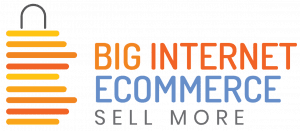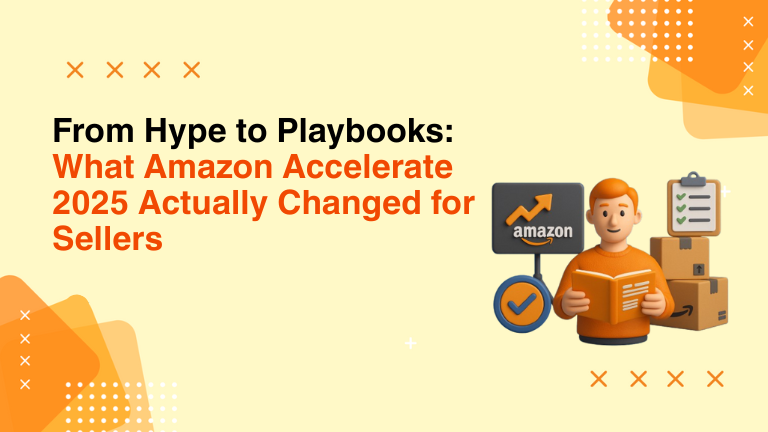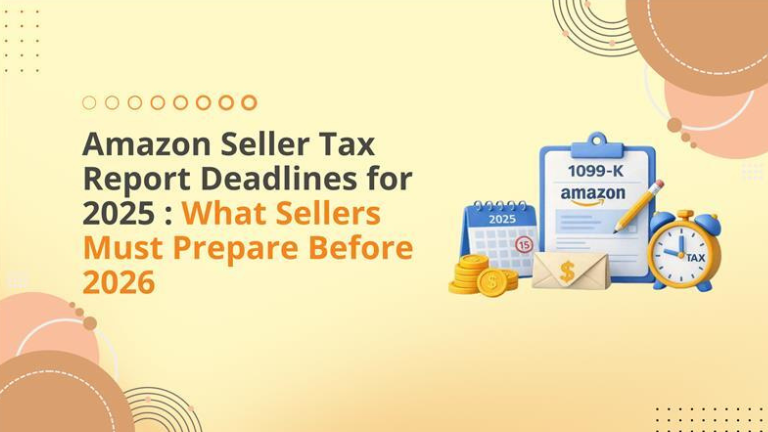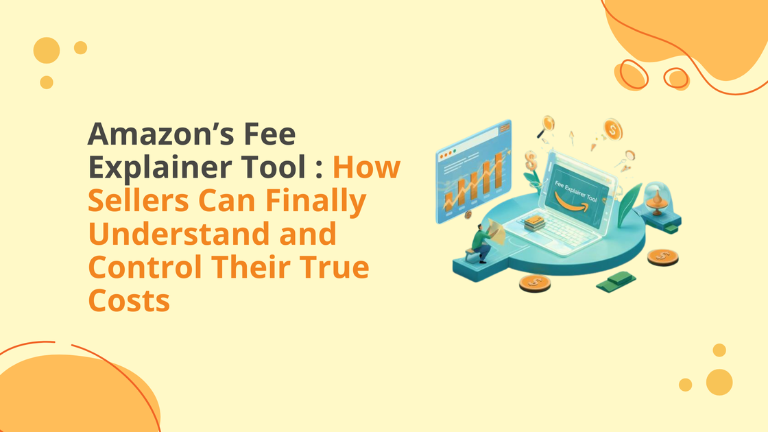’ve run Amazon programs long enough to remember when listing “optimization” meant swapping two adjectives and hoping for the best. Accelerate 2025 felt different: less about shiny tools, more about removing friction in the places we actually bleed time and margin. Below are my annotated takeaways, what launched, how I think it changes day-to-day work, where I’m cautious, and small experiments you can run to verify the upside.
Contents
- 1 The “Agentic” AI Era (useful, if you give it guardrails)
- 2 Cost & Friction Removal (quiet, but extremely valuable)
- 3 C. From idea → launch → scale → fund (and the supply chain to back it)
- 3.1 Discover: Opportunity Explorer (major GenAI upgrade) + Launch visibility
- 3.2 Launch: FBA New Selection (enhanced) + Regional Launch, Vine (enhanced), Product Performance Spotlight, AI markdowns + stronger Outlet
- 3.3 Scale: Customer Journey Analytics + interactive A+
- 3.4 Fund & Expand: Lending + Amazon Business (B2B)
- 3.5 Supply Chain by Amazon (the backbone)
- 4 What I’ll test first (and how I’ll measure it)
- 5 Balanced risks & unknowns (what I’ll keep an eye on)
The “Agentic” AI Era (useful, if you give it guardrails)
-
Seller Assistant evolves from Q&A to an operational co-pilot
What it is: Amazon’s Seller Assistant is graduating from a chat helper to a goal-seeking system that watches your account, reasons across data, and, with approval, executes tasks (listing updates, ads, compliance).
Why it matters: This moves “ops” from tickets and checklists to exception handling. The real value is not content drafting; it’s triage (spotting the thing likely to cost you money next week).
Where I’m cautious: Autonomy is opt-in, but “approve to execute” can drift into “approve by habit.” Keep change-logs and require a short rationale for any auto-action.
Quick experiment: For 2–3 hero ASINs, let the assistant surface three fixes/week; approve one, decline one, request an alternate for one, and compare outcomes.
-
GenAI for listings: create + continuously “Enhance my listing”
What it is: Draft high-quality titles/bullets/attributes from a short brief, image, or URL; a companion tool watches shopping trends and nudges updates so pages don’t go stale.
Upside: Turns listing care from a one-time project into a maintenance loop, closer to how demand actually changes.
Watch-outs: Don’t let AI homogenize voice across a brand family; keep a style guide and ban words you never want to see.
Try this: Accept only suggestions that map to review language customers already use; reject anything that introduces new claims.
-
AI-Powered Creative Studio (ads)
What it is: An AI-powered creative director that researches your brand, plans, and creates video/image/audio variants; early adopters reported ~+12% sales and 3× CTR (e.g., Bird Buddy).
Why it matters: Small teams can finally test creatives at enterprise cadence.
Caveats: Scale can tempt you into undisciplined testing. Pre-register your hypotheses; cap concurrent variants.
Try this: One hypothesis per asset (e.g., “hands-in-use close-ups lift CTR on mobile”). Ship two 15-sec cuts, not eight.
-
AI for account health, category approvals, and global expansion
Flags risky claims before publication, validates docs in minutes, reuses paperwork across markets, and even catches image/claim mismatches.
Reality check: This is huge for regulated categories and multi-country brands, but humans still own the risk. Keep a detailed log of what changed, when, and why.
-
AI for inventory & growth
Long-term fee warnings, action plans (promo vs removal), and end-to-end event planning (Prime Day) with ongoing adjustments if sales drift.
Use case: Free your ops lead from spreadsheet gymnastics so they can negotiate forwarder terms and tiered rebates, things AI can’t (yet) do.
Cost & Friction Removal (quiet, but extremely valuable)
-
Custom Analytics + Profit Analytics
One workbench with 100+ metrics and SKU-level profitability “GPS,” including price-change simulation and alerts across fees/ads/returns.
My take: If you’ve been stitching TACoS, contribution margin, and refunds manually—this is the first native tool that looks like a genuine single source for trade-offs.
-
End of commingling & stickering (brand owners)
No more mandatory FBA stickering when you use manufacturer barcodes; Amazon pegs the savings at ~$600M/year. Returns route back to the seller that shipped the unit.
Implication: Fewer label ops, fewer “wrong seller” returns.
Edge cases: Audit how this behaves on bundles/multipacks and any SKUs with mixed barcoding history.
-
Returns prevention & management
Replacement of parts helps reduce “missing part” return claims >70%; direct seller support prevents ~60% of potential returns; partial-refund-keep-it for minor issues. Unified FBA/FBM returns hub.
Why I care: This is real margin back, not theoretical efficiency.
-
Support + new Seller Central UX
Title edits for brand owners on new listings, faster reimbursements (some in a day), capacity-aware inbound scheduling, “Connect with a Specialist,” and an AI-infused Seller Central with pre-built workflows and personalized dashboards.
Net effect: Fewer “delete & relist” dead-ends, faster time-to-fix.
C. From idea → launch → scale → fund (and the supply chain to back it)
Discover: Opportunity Explorer (major GenAI upgrade) + Launch visibility
Surfaces unmet demand (with design briefs and inventory plan) plus a Niche Product Overview with two-year category evolution and a forecast “coming soon.” New launches get enhanced search/Sponsored Products placement, “New Arrival” spotlights, creator partnerships, and optimized network placement.
Reality check: Treat this as hypothesis generation. Validate with small-region launches (more details below).
Launch: FBA New Selection (enhanced) + Regional Launch, Vine (enhanced), Product Performance Spotlight, AI markdowns + stronger Outlet
- Regional Launch: Start in one USA region with FBA speed, expand after you get proof.
- Vine upgrades: Smarter matching with reviewers, more rich media, and pre-launch enrollment so reviews land on day one.
- Product Performance Spotlight: Real-time AI-powered product coach splitting ads-based traffic vs organic, with custom alerts.
- AI markdowns & Outlet: Guardrailed markdown cadence; Outlet traffic reportedly surged 500%+ in sales events.
How I’d use it: Launch tight, seed reviews early, wire alerts, and pre-write exit ramps for losers (price floors + Outlet plan).
Scale: Customer Journey Analytics + interactive A+
- Journey Analytics: Pinpoint funnel breaks (e.g., “waterproof” absent from images despite being in copy).
- Interactive A+: Product links/tags, live price/deal badges, new video, and thematic collections (kits) to lift basket size.
My note: Collections let you sell the system (routine, kit), not just a SKU—great for AOV.
Fund & Expand: Lending + Amazon Business (B2B)
- Lending: QuickBooks Capital (rapid eval; on-the-spot approval coming) and Uncapped (LOC up to $5M).
- B2B: Business customers buy ~70% more units and return ~40% fewer; B2B-only Sponsored Products are reporting 2–3× ROAS; fee incentives for large orders.
When to lean in: If your category has multi-unit consumption or procurement cycles (MRO, office, hospitality), B2B targeting is low-hanging fruit.
Supply Chain by Amazon (the backbone)
- Global Warehousing & Distribution: Single global inventory pool near manufacturing; AI pushes stock via Amazon’s ocean network as demand appears. Claimed 20–40% storage reduction; lower working capital; pilot now, broader roll-out this year.
- AGL expansions: Toward 95% worldwide FBA coverage next year; new Global Consolidation Network; best-ever on-time delivery.
- AI customs clearance: Auto-fills ~70% of forms, classifies across 10k+ codes; >50% time savings in tests.
- AWD capacity & discount: +12M cu ft across CA/AZ; 25% inbound processing discount for pallets/single-SKU cartons.
- MCF integrations: Walmart, Shopify, SHEIN (app Fall ’25). Reported +19% in-stock, +12% faster turns, +19% sales using one FBA pool.
- Amazon Easy Ship (2026): Auto-carrier selection, ~30% faster deliveries and >20% sales lift in tests.
My read: This is the quiet revolution: fewer containers sitting in the wrong country, less safety stock, faster experiments in new markets.
What I’ll test first (and how I’ll measure it)
- Listing “Enhance” + Creative cadence
- Goal: Lift detail→ATC rate on top-sessions ASINs.
- Method: Accept only enhancements grounded in review language; ship two new 15-sec videos per ASIN; freeze all other variables for two weeks.
- Metrics: ATC%, CVR, TACoS movement on matched periods.
- Regional Launch + Vine pre-launch
- Goal: Faster, lower-risk signals for a new variant.
- Method: Allocate 20–30% of national launch inventory to one region; enroll Vine at FBA receipt; wire Spotlight alerts.
- Metrics: Time-to-first-10 reviews, week-4 CVR vs national benchmarks.
- Interactive A+ collections for AOV
- Goal: Increase units/order and attach rate.
- Method: Build two kits (“Starter,” “Pro”) inside A+; tag complimentary SKUs.
- Metrics: AOV, attach %, customer journey steps before ATC.
- Returns prevention trifecta
- Goal: Reduce avoidable returns without hurting CSAT.
- Method: Turn on parts-replacement, staffed support window, and partial-refund-keep-it for minor issues in two categories.
- Metrics: Return rate delta, net margin after refunds, review sentiment.
- Global Warehousing pilot readiness
- Goal: Shorten lead time into the US/EU without ballooning working capital.
- Method: Model one SKU through AWD + AGL + MCF; compare turns and total landed cost per unit vs current flow.
- Metrics: Days of supply, turns, in-stock %, landed cost/CBM.
Balanced risks & unknowns (what I’ll keep an eye on)
- Over-automation drift: Agentic systems can normalize approvals, create a weekly human review ritual with “revert” buttons.
- Creative sameness: AI is fast, but it can flatten brand voice. Lock a voice guide and disallow banned phrases.
- Attribution halo: Early sales/CTR lifts are promising; still separate incrementality from reallocation (e.g., did video simply steal clicks from static?).
- Policy edge cases: Faster category approvals are a gift; keep a change log of claims/assets, especially for regulated goods.
- Global inventory reality: Central pools are powerful until a forecast is wrong. Start with one lane, not your entire catalog.
Want me and my team to plug these upgrades into your catalog with clear targets for TACoS, margin, and growth?
Schedule a strategy call, and we’ll map a strategy rollout tailored to your ASINs.






